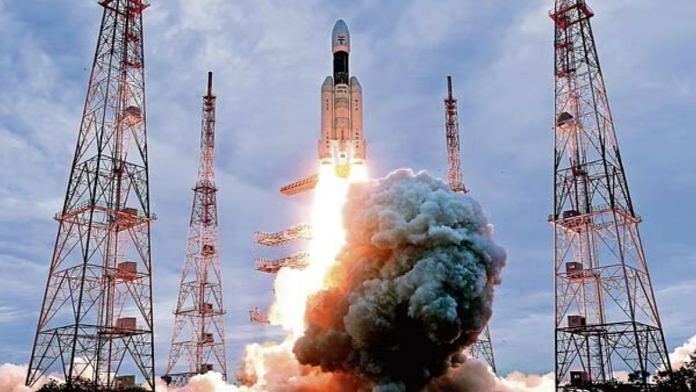Thank you dear subscribers, we are overwhelmed with your response.
Your Turn is a unique section from ThePrint featuring points of view from its subscribers. If you are a subscriber, have a point of view, please send it to us. If not, do subscribe here: https://theprint.in/subscribe/
On August 23, as India proudly celebrated Chandrayaan-3’s successful Moon
landing, our neighboring Pakistan displayed a contrasting response. Its people
expressed intense frustration, disdain, and even humorous mockery about their
own country.
A Pakistani individual humorously drew a comparison between Pakistan and the
Moon, highlighting their shared lack of fundamental necessities like water, gas,
and electricity. This remark amusingly suggested that Pakistanis need not strive
to reach the Moon, as they were already experiencing lunar-like conditions
within their own country. What caught my intense attention was when one
Pakistani suggested, “Pakistan re-unite with India”!
While the comment was obviously spontaneous and reflects the utter frustration
of people, within Pakistan, the contrast in economic trajectories between the
two nations underscores the potential benefits of a reunified India-Pakistan.
Pakistan’s creation was intended to provide a homeland for Muslims. However,
subsequent years have seen a mix of political instability, military interventions,
and governance challenges. Economic growth has been inconsistent, and
corruption has permeated various sectors, stifling progress and development.
Human development indicators in Pakistan, ranging from education to
healthcare, have struggled to gain traction, reflecting the lack of effective
governance.
In contrast, India embarked on a journey of self-discovery, growth, and reform.
Despite its initial challenges, India’s democracy weathered the storms, gradually
leading to significant policy reforms, technological advancements, and
improved human development indicators. The nation’s commitment to
secularism and pluralism has allowed diverse cultures and traditions to coexist,
making it a beacon of unity in diversity.
The Narendra Modi-led government’s reforms, has further bolstered
infrastructure, ease of doing business, and digital innovation. India’s projection
to become a five trillion dollar economy is a testament to its economic vitality.
A Vision for a Reunited Future
A reunified India-Pakistan holds immense potential. With a population of 1.5
billion, this re-united India-Pakistan, would possess a massive consumer base
and a robust talent pool.
A united India-Pakistan would boast an economy that capitalizes on the
strengths of both nations. Pakistan’s strategic location, abundant natural
resources, and skilled workforce, coupled with India’s technological prowess,
industrial base, and innovation potential, could fuel rapid economic growth. The
integration of supply chains, manufacturing capabilities, and technological
innovation would elevate the new nation’s status as a global economic force.
The massive population would translate into a burgeoning consumer market,
attracting international businesses and investments. A unified market would
simplify trade and investment processes, fostering economic growth and
creating job opportunities across sectors.
Political Stability and International Standing
The geopolitical significance of a reunified India-Pakistan cannot be
underestimated. A region characterized by political tensions and security
concerns could transform into a beacon of stability and cooperation. Shared
security concerns and aspirations for regional peace could lead to more
productive diplomatic endeavors and stronger collaborations with neighboring
nations.
While the vision of a reunified India-Pakistan is inspiring, it is crucial to
acknowledge the complexities involved. Historical grievances, differing
political narratives, and administrative challenges would require thoughtful
reconciliation and compromise.
However, history has shown that seemingly insurmountable barriers can be
overcome through dialogue, understanding, and a shared commitment to
progress.
The process of reunification would necessitate meticulous planning, involving
legal, administrative, and constitutional considerations. Moreover, addressing
the concerns and aspirations of diverse communities within both nations would
be vital to ensuring inclusivity and lasting unity.
A Vision for Future Generations
The dream of a reunified India-Pakistan is not just about the present; it’s about
the legacy we leave for future generations. By transcending the divisions of the
past and embracing a shared future, we can provide our children with a world
where peace, prosperity, and unity prevail. This vision represents an opportunity
to heal wounds, bridge divides, and reshape the destiny of an entire region.
Ultimately, a reunified India-Pakistan would be more than the sum of its parts.
It would be a testament to the power of human potential, a celebration of
diversity, and a bold stride toward global progress. As we reflect on the past and
look to the future, let us dare to dream of a unified subcontinent that stands as a
shining example of what can be achieved through cooperation, determination,
and a shared vision of prosperity for all.
The reunification of divided nations like East and West Germany serves as a
testament to the power of unity and cooperation in overcoming historical
divisions. While each situation is unique and presents its own set of challenges,
the examples of successful reunification remind us that shared aspirations, a
commitment to dialogue, and a focus on common goals can lead to a brighter,
more prosperous future.
As the world continues to grapple with various conflicts and divisions, these
examples offer valuable insights into the potential for healing wounds, building
bridges, and striving for a united world.
(Mohan Murti is Advocate & former Europe Director of Reliance Industries
Limited)
These pieces are being published as they have been received – they have not been edited/fact-checked by ThePrint.

